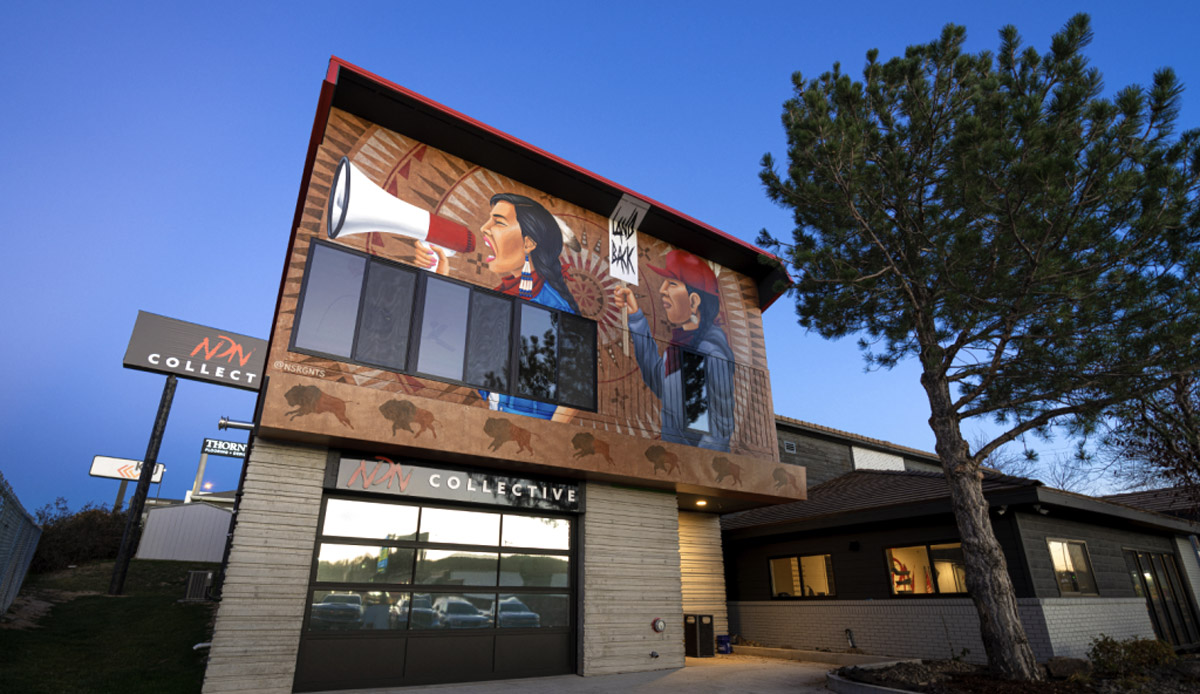Native CDFIs

A Win-Win Investment with Lasting Impact
Native CDFIs are proven and promising partners that make a positive difference in Indian Country successfully and sustainably.
Native CDFIs are building equitable economies in Native communities by opening doors to loans, extending credit to thriving businesses, generating good jobs, and expanding access to new opportunities. They also open doors to financial institutions and other investors that are seeking ways to partner with Native communities.
They build trust, strong community relationships, and self-determination to help Native communities overcome challenges of accessing credit and building assets created by economic systems that have harmed them or ignored their needs. They work to ensure that everyone has real opportunity and the tools they need to thrive: good jobs, homes, schools, and more.
Bringing Dreams to Life for Multiple Generations
Native CDFIs understand the unique assets and needs of Native communities and cultures, respecting their perspectives and honoring their histories. This is what makes Native CDFIs capable of establishing a powerful infrastructure for economic and cultural wealth that is built to last.
FOCUS ON NATIVE CDFIs
South Dakota Native Homeownership Coalition
This pioneering coalition has achieved 10 years of steady growth and breakthroughs, ensuring that Native Americans reap the multiple benefits of buying a home. They’re creating an entire infrastructure, helping Native homebuyers, construction companies, workers, and banks. They’re literally changing the financial system to make sure more resources flow to Native homebuyers.
“We’ve set a model that is being replicated. We’ve got other states that are making their own [Native housing] coalitions based on their needs and resources.”
— Sharon Vogel (Cheyenne River Sioux), Board Chair, South Dakota Native Homeownership Coalition, and Executive Director, Cheyenne River Housing Authority
Enabling Native Communities to Thrive in the Face of Historic Impacts
To invest for prosperity in Native communities, successful financial services need to reflect traditional values, guided by the wisdom to plan for multiple generations.
The services must also account for the impact of history. The systemic racism, violence, and exclusion that began in these lands centuries ago continues today—resulting in traumas, financial instability, and other barriers that make it harder for the communities we partner with to thrive on their own terms. These patterns were profoundly evident during the recent pandemic, when government responses left an enormous gap for Native communities. Nonetheless, Native CDFIs were able to step in and step up to fill the gap by providing loans, services, connections, and more to help families, businesses, and communities.

As the pandemic helped show, Native communities are relentlessly resilient in the face of extraordinary challenges. Businesses have fought to create jobs and give back. Workers have generated cash and employment in places without a main street or a bank to support them. More entrepreneurs and families need access to capital that’s tailored to their culture and way of life.
Native CDFIs understand this need and are experts in serving, responding, and delivering results successfully. Their practical know-how builds on the wealth of wisdom in Native communities and the need to heal.
To achieve these goals, Native CDFIs also connect investors to Native businesses with a respect for history, culture, and context that helps communities thrive for the long term.
FOCUS ON NATIVE CDFIs
Mountain | Plains Regional Native CDFI Coalition
The Coalition is reimagining local and regional economies from the ground up using a collaborative approach that draws on Native cultural strengths.
“We know from experience that coalitions of this kind work when they’re grassroots based, when they’re collaborative by design.”
— Lakota Vogel (Cheyenne River Sioux), Executive Director, Four Bands Community Fund
Five Reasons to Partner with Native CDFIs for Long-Term Impact
1: Native CDFIs Create Sustainable, Long-Term Economic Growth »
2: They Change Lives Through More than Loans »
3: Native CDFIs Are the Smart Investment Choice »
4: Native Economies Are Growing and Need More Access to Capital »
Read about how to partner with a Native CDFI
DownloadHow Financial Institutions Can Support Native CDFIs
Financial Institutions and other organizations that are committed to Native communities can have a vital role in helping them thrive. There are many options to invest that align with the values and missions of both these investors and the Native CDFI. For example:
Provide Technical Assistance
One of the ways that financial institutions often work with Native CDFIs is by providing IT support and technical assistance, an area of expertise many institutions already provide to their bank or credit union network. And there are plenty of other ways to offer in-kind assistance.
Offer Capital Through Loans
Capital investments in Native CDFIs can be impactful at any size—even small loans impact economic opportunity, and larger investments are easy through Oweesta Corporation, the only Native CDFI intermediary lender.
Match Government Dollars to Build Native CDFI Lending Capacity
The Native American CDFI Assistance Program from the U.S. Department of the Treasury’s CDFI Fund awards loans, grants, deposits, and equity investments for Native CDFIs, but requires a dollar-for-dollar match from a non-federal source. Through matching, community banks can help Native CDFIs meet the federal requirement for financial assistance awards to help grow their lending capacity.
Meet Requirements in the Community Reinvestment Act
Banks can meet their Community Reinvestment Act (CRA) requirements by investing or partnering with a Native CDFI, an opportunity that assessment regulators promote and support. Options include providing equity capital and bank services. Just ask your regulator, who can help you find the right investment fit for CRA consideration.
FOCUS ON NATIVE CDFIs
NDN Collective and CDFIs Remove Barriers
CDFIs were created to remove barriers for populations denied prosperity. Funders can be supportive in advancing the work of the Native CDFIs in providing lending services for communities historically denied access to opportunities to prosper.
“We’re working to remove barriers, like traditional collateral, and embracing loan policies and procedures that better reflect the needs of the communities we serve.”
— Kim Pate (Cherokee and Choctaw), Managing Director, NDN Fund, the impact investing and lending arm of NDN Collective


